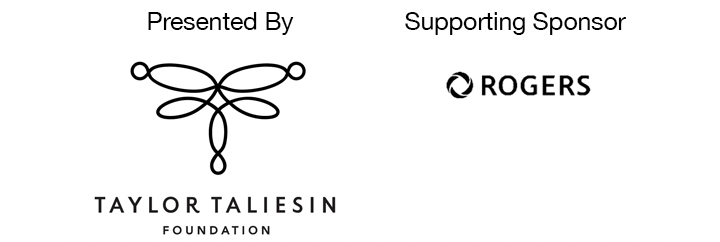Conversations On Response: Resonance
Online
In January 2023, new video works by ten artists were presented at The Polygon Gallery. Created during a series of workshops led by Indigenous artists and Knowledge Holders in 2022, all films explore themes such as knowledge transfer, ceremony, and healing.
As a follow up to the gallery screening, the themes in Response have been developed further in a series of four online dialogues about the films between the artists and guest respondents. The films are available to view temporarily alongside these conversations on the Gallery’s Vimeo channel until the end of April.
Episode list
Filmmaker Courtney Montour in conversation with KJ Edwards and Toni Leah Yake about dreaming as a form of technology that can be utilized to process loss and grief, while creating a space to heal and reconnect.
Artist Cheyenne Rain LeGrande ᑭᒥᐊᐧᐣ in conversation with Jake Kimble about the way that laughter can become medicine for our families, communities, and ourselves, when silence is what is expected of us.
Artist Aaron Leon in conversation with Alysha Johnny Hawkins and Sussan Yáñez about instilling reciprocity in the teachings that they are passing down to future generations.
Artist Stacey Fayant in conversation with Adele ᒪᐢᑿᓱᐤᐏᐢᑵᐤ Arseneau and Stacey Donovan, iskʷíst Sm̓x̌ik̓ən̓ about challenging the ways that they were taught to exist through the power of language and labour.
About Courtney Montour
Courtney Montour (Kanien’kehá:ka) is a filmmaker from Kahnawà:ke whose work explores issues of Indigenous identity. Her documentary works include Mary Two-Axe Earley: I Am Indian Again (2021, produced by the National Film Board of Canada), Flat Rocks (2017), and Sex Spirit Strength (2015). Courtney co-founded and coordinated McGill University’s Indigenous Field Studies course, held in Kahnawà:ke, for 8 years. She is a recipient of the 2022 NDN Collective Changemaker Fellowship.
Cheyenne Rain LeGrande ᑭᒥᐊᐧᐣ
Cheyenne Rain LeGrande ᑭᒥᐊᐧᐣ is a Nehiyaw Isko artist, from Bigstone Cree Nation. She currently resides in Amiskwaciy Waskahikan also known as Edmonton, Alberta. Her work often explores history, knowledge and traditional practices. Through the use of her body and language, she speaks to the past, present and future. Cheyenne’s work is rooted in the strength to feel, express and heal. Bringing her ancestors with her, she moves through installation, photography, fashion, video, sound, and performance art.
About Aaron Leon
Aaron Leon is from Splatsin where he grew up in the town of Armstrong. Leon attended Concordia University where he received his BFA with a major in photography and oversees the media needs of the Language and Cultural Program of the Splatsin Tsm7aksaltn Teaching Centre. He is helping to preserve the Splatsin dialect of Secwepemctsín in which there are less than 1% of fluent speakers left. Leon has been focusing on promoting a healthier community through arts and culture, by helping organize art and culture workshops at Splatsin. He has worked in community theater and currently sits on the board of directors for Caravan Farm Theatre.
Interested in exploring identity and Indigenous history, Leon is currently attending UBC Okanagan in the Interdisciplinary Graduate program researching Secwépemc histories and stories in hopes of learning more about how Indigenous People can protect knowledge digitally, and keep intact the importance of responsibility, respect, and reciprocity in the digital world.
About Stacey Fayant
Stacey Fayant is Métis, Nehiyaw, and Saulteaux on her father’s side and French on her mother’s side. She is a visual artist from Regina, Saskatchewan and is a member of Peepeekisis First Nation. Stacey has been angry since childhood due to witnessing the effects of racism and poverty in the society she grew up in. As she has aged, Stacey has learned to use that anger as a driving force for her art and creativity. As such, Stacey’s art practice has always focused on concepts surrounding identity and trauma in relation to colonialism and racism, but also in relation to healing, family, and community. Her art is a means of transferring knowledge of family, history and stories to her daughter, her cousins and her community. She works in many mediums including beading, felting, sewing, painting, printmaking, and Indigenous Cultural Tattooing. Stacey’s participation in the revival of Indigenous Cultural tattooing is for her, a revival of community connection, healthy interaction and touch and a revival of self-pride and love.

Banner Image: Jake Kimble, The Things I Learn From My Grandmother’s Giggle, (still),2022